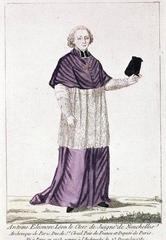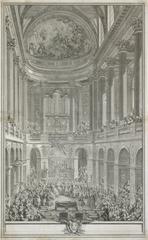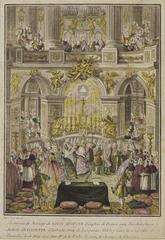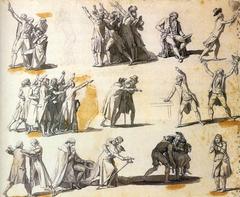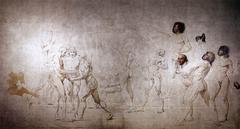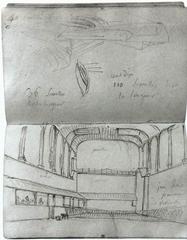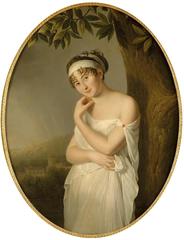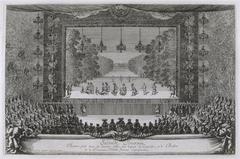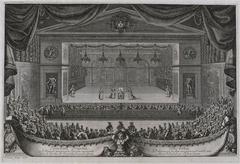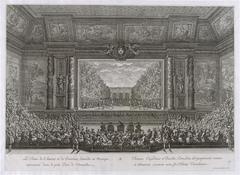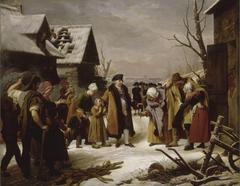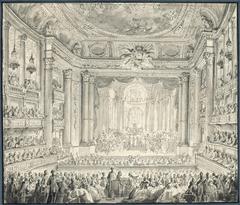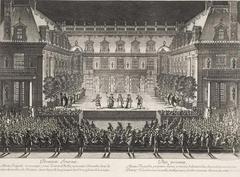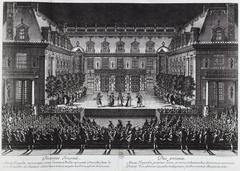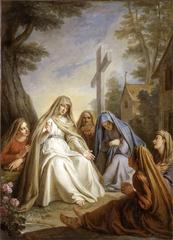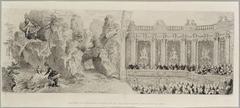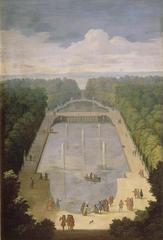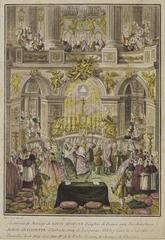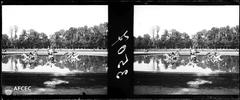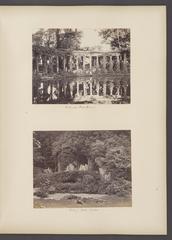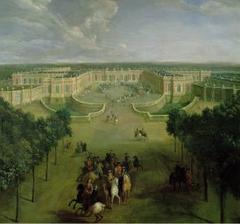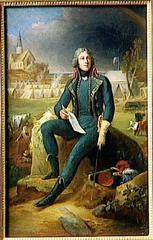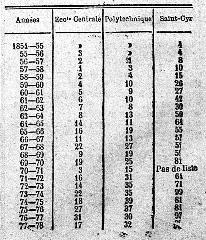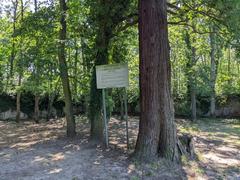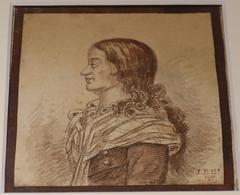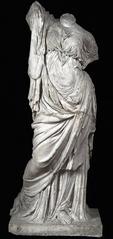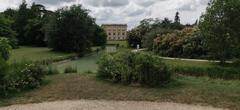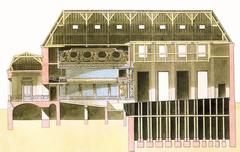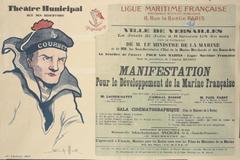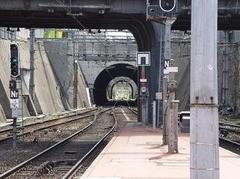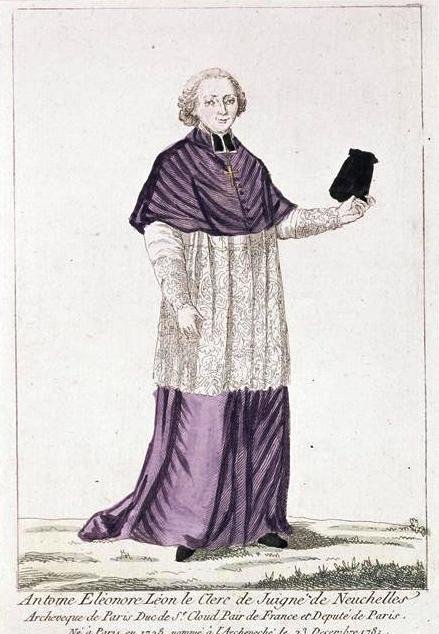
Museum of the History of France at Versailles: Visiting Hours, Tickets, and Visitor Guide
Date: 14/06/2025
Introduction
The Museum of the History of France at Versailles is a landmark institution located within the illustrious Palace of Versailles. Established by King Louis-Philippe I in 1837, the museum was designed to unite the diverse legacies of the monarchy, revolution, and empire under one roof. Today, it offers visitors a comprehensive exploration of French history through its extensive collections, housed in the grand architectural setting of the former royal residence. This detailed guide provides essential information on the museum’s history, collections, visiting hours, ticketing, accessibility, and practical tips for an enriching visit (en.chateauversailles.fr, franceunwrapped.com).
Table of Contents
- Historical Evolution of the Museum
- Collections and Thematic Galleries
- Key Visitor Information (Hours, Tickets, Accessibility)
- Planning Your Visit: Tips and Nearby Attractions
- Modern Role & Cultural Significance
- Frequently Asked Questions (FAQ)
- Conclusion
- References
Historical Evolution of the Museum
From Royal Hunting Lodge to National Monument
Versailles began as a modest hunting lodge built by Louis XIII in 1624. It was Louis XIV—the Sun King—who transformed it into a symbol of absolute monarchy, enlisting architect Louis Le Vau, landscape designer André Le Nôtre, and decorator Charles Le Brun. By 1682, Versailles had become the center of French political power, with iconic spaces like the Hall of Mirrors and Royal Chapel reflecting the monarchy’s grandeur (en.chateauversailles.fr, historytools.org).
Revolution and Repurposing
The palace remained a royal residence until the French Revolution in 1789, when the royal family was forced to relocate to Paris. Afterward, much of its artwork and furnishings were transferred to other institutions, notably the Louvre. In the revolutionary and Napoleonic eras, Versailles served various practical roles, from a museum project in 1796 to a hospital during the Franco-Prussian War (franceunwrapped.com).
The Vision of Louis-Philippe
King Louis-Philippe’s reign marked a turning point. Aiming for national reconciliation, he initiated the transformation of Versailles into a museum dedicated to “all the glories of France.” The museum was inaugurated in 1837, with large sections of the palace reconfigured as galleries showcasing the milestones of French history. This was a deliberate effort to foster unity by honoring the monarchy, revolution, and empire alike (en.chateauversailles.fr, worldhistoryjournal.com).
Collections and Thematic Galleries
Overview
The museum houses over 60,000 works—including paintings, sculptures, and decorative arts—spanning from the medieval era through the 19th century. Collections are arranged in thematic and chronological galleries, offering visitors an immersive journey through French history (en.chateauversailles.fr/discover/collections).
Notable Galleries and Highlights
- Grand Gallery of Battles (Galerie des Batailles): A monumental gallery lined with vast paintings and busts commemorating major French military victories from the Middle Ages to the Napoleonic era (historyhit.com).
- Coronation Room (Salle du Sacre): Features Jacques-Louis David’s masterpiece “The Coronation of Napoleon,” alongside regalia and period artifacts.
- Hall of Crusades (Salle des Croisades): Adorned with coats of arms and paintings highlighting the Crusades and medieval chivalry.
- Hall of the Empire (Salle de l’Empire): Showcases the First Empire, with portraits, military memorabilia, and scenes from Napoleon’s reign.
- Hall of the Royal Family (Salle de la Famille Royale): Focuses on the Bourbon dynasty, displaying portraits, personal objects, and furnishings.
- History Gallery (Galerie de l’Histoire du Château): Recently revamped, this gallery uses interactive displays and over 120 works to chart Versailles’ transformation from hunting lodge to palace and museum (audiala.com).
- Temporary Exhibitions: The museum also hosts rotating thematic exhibitions, often with loans from other institutions and interactive elements.
Key Visitor Information
Visiting Hours
- High Season (April–October): Tuesday–Sunday, 9:00 a.m. to 6:30 p.m. (last admission 6:00 p.m.)
- Low Season (November–March): Tuesday–Sunday, 9:00 a.m. to 5:30 p.m. (last admission 5:00 p.m.)
- Closed: Mondays, January 1st, May 1st, December 25th (museos.com).
Ticketing
- Passport Ticket (€24): Includes palace, museum, gardens, Trianon palaces, Marie Antoinette’s Estate, and temporary exhibitions.
- Palace Ticket (€21): Entry to the main palace and museum.
- Free Admission: EU citizens under 26, children under 18, and first Sundays (November–March).
- Paris Museum Pass: Includes museum access (timed reservation required).
- Advance Booking: Strongly recommended for all visitors. Time-slot reservations are compulsory (en.chateauversailles.fr, european-traveler.com).
Accessibility
- Wheelchair accessible with ramps, elevators, and accessible toilets.
- Wheelchairs available at the entrance with valid ID.
- Audio guides in multiple languages, included with most tickets.
- Guided tours offered in English and French (advance booking recommended).
Planning Your Visit: Tips and Nearby Attractions
Travel and Logistics
- Reach Versailles by RER C train from Paris; disembark at Versailles Château – Rive Gauche (10-minute walk to the palace).
- Arrive early for smaller crowds, particularly in peak season.
- Allocate at least 2–3 hours for the museum; longer if exploring the whole estate.
- Wear comfortable shoes and bring water.
Facilities
- Restrooms and cloakroom service are available.
- Dining options include on-site cafés and restaurants.
- Strollers permitted in gardens but not inside galleries; baby carriers recommended indoors.
Nearby Attractions
- Gardens of Versailles: Fountains, sculptures, and manicured lawns by André Le Nôtre.
- Grand Trianon & Petit Trianon: Secondary palaces with unique architectural and historic significance.
- Queen’s Hamlet: Rustic retreat of Marie Antoinette.
- Events: Night Fountains Show and seasonal cultural events (welcometoversailles.com, wanderingwhytraveler.com).
Modern Role & Cultural Significance
The Museum of the History of France continues to play a pivotal role in presenting a unified narrative of French history. By bringing together royal, revolutionary, and imperial artifacts and artworks, the museum fosters a sense of national identity and collective memory. Its galleries have hosted key political events, including the declaration of the German Empire in 1871 and several French presidential elections, further cementing its status as a site of national importance (en.chateauversailles.fr).
Restoration efforts preserve both the palace and its collections, while modern amenities—like mobile apps, educational programming, and interactive exhibitions—ensure the museum remains accessible and engaging to contemporary audiences (audiala.com).
Frequently Asked Questions (FAQ)
Q: What are the museum’s opening hours?
A: Tuesday–Sunday, 9:00 a.m.–6:30 p.m. (April–October), 9:00 a.m.–5:30 p.m. (November–March). Closed Mondays and select holidays.
Q: How do I buy tickets?
A: Purchase tickets online in advance via the official website to guarantee entry and avoid queues (en.chateauversailles.fr).
Q: Is the museum wheelchair accessible?
A: Yes, with ramps, elevators, and wheelchairs available.
Q: Are guided tours and audio guides available?
A: Yes, both are offered in multiple languages; advance booking is recommended for tours.
Q: Can I take photos inside?
A: Photography without flash is permitted; tripods and selfie sticks are not allowed.
Q: Are there family-friendly features?
A: Yes, including children’s activity booklets, family tours, and accessible facilities.
Conclusion
The Museum of the History of France at the Palace of Versailles offers an unparalleled journey through the nation’s storied past, set amidst the grandeur of one of the world’s most famous palaces. Thoughtfully curated galleries, accessible visitor services, and a deep connection to French heritage make this museum a must-visit destination. Plan ahead, book your tickets online, and take time to explore not only the museum but also the magnificent gardens and neighboring Trianon palaces for a complete Versailles experience.
For the latest information on exhibitions, events, and visiting conditions, consult the official Palace of Versailles website and consider downloading the museum’s app. Embrace a memorable encounter with French history—where the past comes vividly to life.
References and Further Reading
- Palace of Versailles official website: Discover the history
- France Unwrapped: History of Versailles
- History Tools: The Palace of Versailles
- Official Versailles Ticket Info
- History Hit: Palace of Versailles Museum
- Twin Family Travels: Versailles Tips
- Audiala Guide to Versailles
- Palace of Versailles: Plan Your Visit, Tickets, and Prices
- World History Journal: The Palace of Versailles History
- Museos: Palace of Versailles Visitor Info
- European Traveler: How to visit Versailles
- Welcome to Versailles: Best Time to Visit
- Wandering Why Traveler: Pro Tips for Visiting Versailles
- Just Simply Wander: Palace of Versailles Guide
